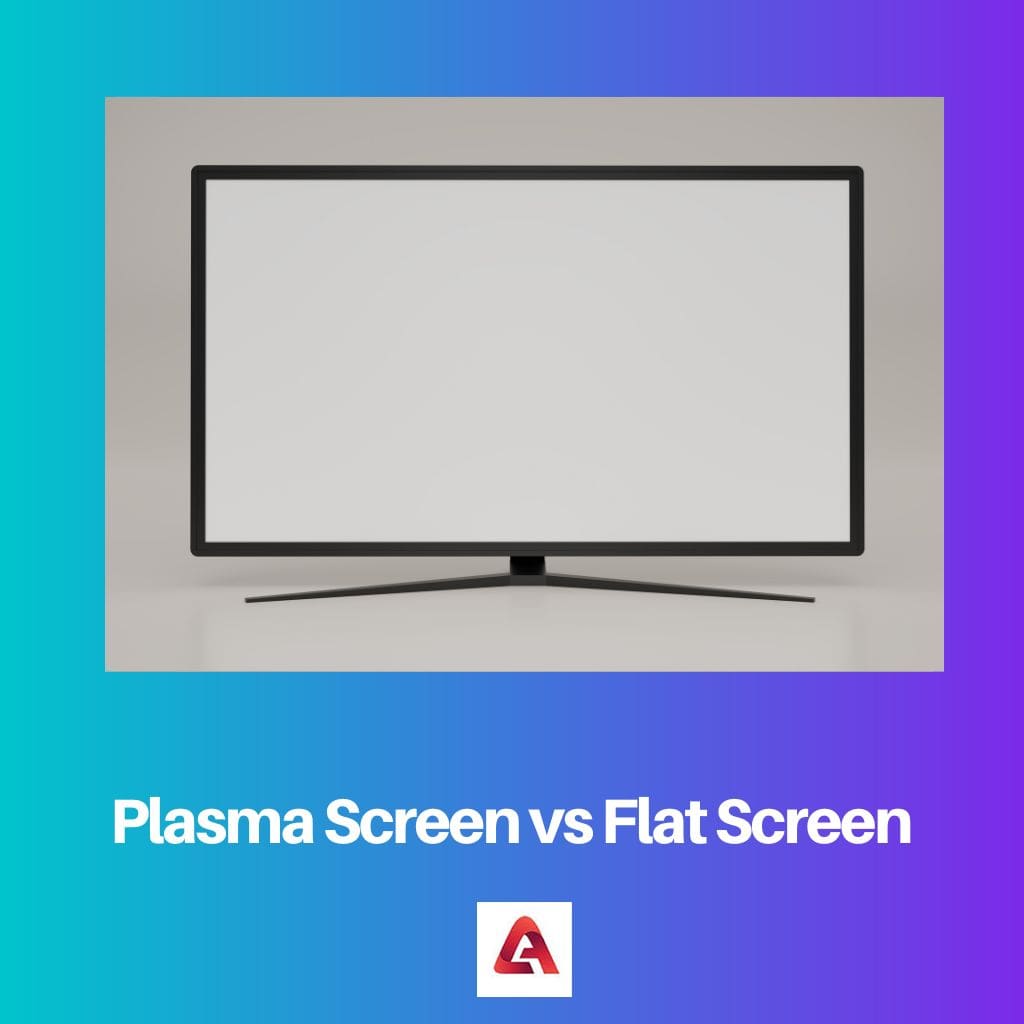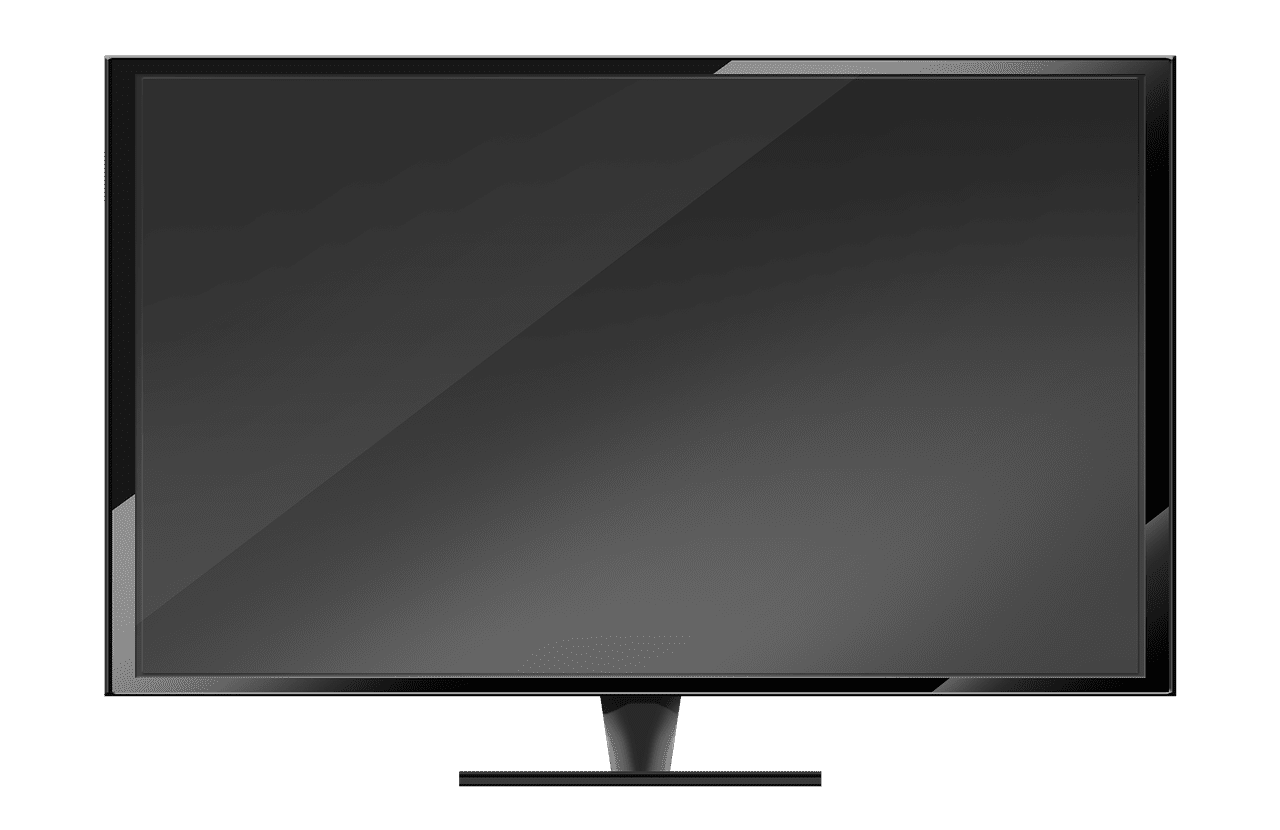With the revolution of Televisions, the screens have become flat. The initial screens were Cathode Ray Tube TV, which was heavy and bulky.
Later, new technology bought thinner and lighter models. Screens can be broadly classified into two main types: Plasma and Flat Screens.
Key Takeaways
- Plasma screens use ionized gas to create images, while flat screens can utilize various technologies, such as LCD or OLED.
- Plasma screens deliver deeper blacks and better color accuracy, but flat screens have a longer lifespan and lower power consumption.
- Flat screens are thinner and lighter than plasma screens, making them more suitable for wall mounting and portability.
Plasma Screen vs Flat Screen
Plasma screens use a grid of tiny cells filled with a gas mixture ignited by an electrical charge to emit ultraviolet light. Flat screens use LCD (liquid crystal display) technology to produce images. They consist of layers of liquid crystals sandwiched between two polarizing filters.

A plasma screen is the initial model of display. It was first launched in the year 1964.
Plasma screens are heavily weighted. The models are bulky and do not provide portability to the users.
The type of display was extensively used in large televisions.
On the other hand, flat-screen is the latest and most modern display models. It was first launched in the year 1968.
Flat screens are light weighted, and the models are thin and compact, providing portability to the users.
The type of display is used in various domains like computers, entertainment, electronic devices, transportation and industrial equipment, medical equipment, and others.
Comparison Table
| Parameters of Comparison | Plasma Screen | Flat Screen |
|---|---|---|
| Year of launch | 1964 | 1968 |
| Type of display | Volatile | Two types- static and volatile |
| Contrast ratio | 5,000,000:1 | 4000:1 |
| Advantages | The lifetime is comparatively lower, the black produced on the screen is not very deep, the viewing angle is moderately wide, inferior uniform, and expensive. | Susceptible to screen burn-in image retention, bistable colour nature, Initial models had phosphorus which lost luminosity, and does not operate well at higher altitudes |
| Disadvantages | The lifetime is comparatively lower, the black produced on the screen is not very deep, the viewing angle is moderately wide, inferior uniformity and is expensive | The lifetime is comparatively lower, the black produced on the screen is not very deep, the viewing angle is moderately wide, inferior uniform, and expensive.. |
What is Plasma Screen?
A plasma screen is known as Plasma Display Panel or PDP faster. The display uses small cells containing ionized gas that can respond to electric fields. The use of plasma displays was at its peak in the year 2007.
The type of display was extensively used in large televisions. However, plasma screens became obsolete with introducing a different kind of this place.
Plasma screens provide a wide colour gamut and are a brighter display source. The screens can be manufactured in various large sizes, up to 150 inches. The plasma screen is locally lit and does not have any backlight.
It has comparatively low luminance in black levels.
A typical plasma screen is about 6 cm, and the total thickness is around 10 cm. The constituent of the plasma screen is glass which also produces glare from surrounding light sources.
The power consumption of the screen depends on the picture content. A brighter picture requires more power than darker pictures.
A typical plasma screen lasts about 11 years or 100,000 hours.
The colour reproduction of the plasma screen is similar to the CRT display. The contrast ratio is 5,000,000:1. The viewing angles of the plasma screen are wider.
The polishing process by clouding does not affect the plasma screen. It also provides superior uniformity. The screen has a faster response time and higher refresh rate. This leads to less visible motion blur.

What is a Flat Screen?
A flat screen is known as a Flat Panel Display or FPD. It is an electronic display device used in various domains like computers, entertainment, electronic devices, transportation and industrial equipment, medical equipment, and others.
The screen has various portability advantages because of its low power consumption and lightweight models.
The thickness of the flat screen is less than 10 cm. They are available in two display categories eit, her static and volatile displays.
The static display has bistable colour states which retain the picture even when the power is off, At the same time, the volatile production has pixels that are periodically refreshed and shows the image on the screen only when the emphasis is on.
The flat-screen can provide a resolution of 1080p and even 4K resolution. Some flat screens can even have additional video input, a multi-functional monitor or MFM.
The flat-screen can Be classified into various types like Liquid Crystal Display or LCD, LED-LCD, Electroluminescent panel or ELD, Organic light-emitting diode or OLED, and Quantum-dot light-emitting diode or QLED.
Due to the exclusion of CRT technology, the models are flat and lightweight. The life span of flat screens is about 50,000 – 100,000 hours. It does not have a wide angle and supports viewing grades up to 165°.
The pictures which are viewed from the side can suffer. The screen type has its backlight also.

Main Differences Between Plasma Screen and Flat Screen
- The plasma screen is known as Plasma Display Panel or PDP, while the flat screen is known as Flat Panel Display or FPD.
- Plasma screens are bulkier and heavier, while flat screens are thinner and lighter.
- Plasma screens are no more manufactured and have become obsolete, while flat-screen are manufactured extensively.
- Plasma screens emit UV light to stimulate phosphorus for luminosity, while Flat-screen does not emit any UV light.
- The plasma screen does not have any backlight, while the flat screen has a backlight.



